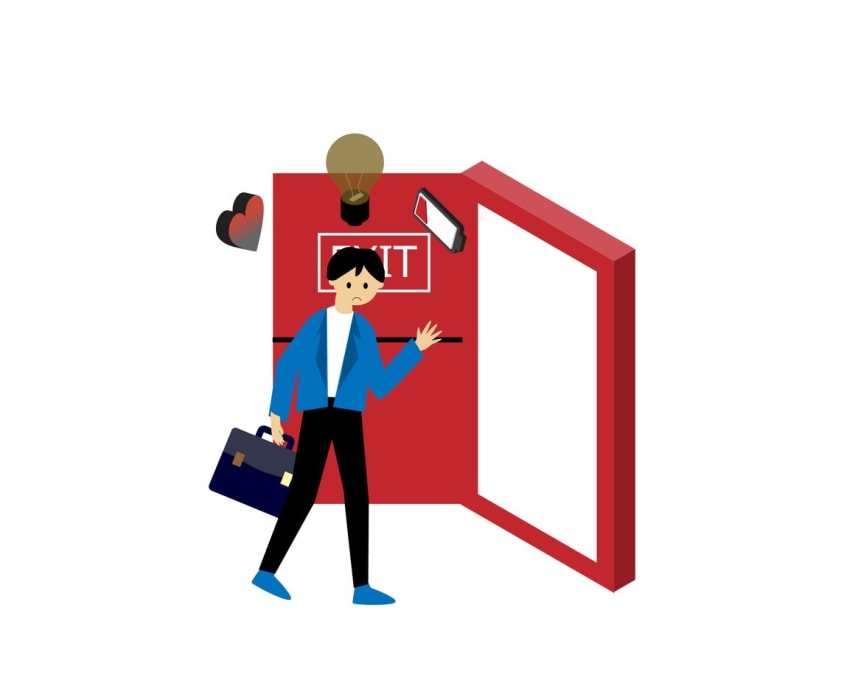Imagine a workplace where employees are thriving - not just surviving. Their enthusiasm for their job is palpable. They’re productive, they’re satisfied, and they’re fully invested in their role. This is the power of employee engagement. However, achieving this state of workplace bliss is easier said than done, especially when dealing with low employee engagement. But fear not, with the right strategies and tools, it’s entirely possible to transform a workforce from disengaged to fully invested.
Key takeaways
- Motivate your employees to unlock the potential of productivity and job satisfaction.
- Leadership, career growth & recognition/rewards are key factors in employee engagement.
- Fostering positive work environments with technology can help boost motivation and success for organizations.
Unraveling the impact of low employee engagement

Sadly, not all organizations bask in the glow of engaged employees. In fact, low employee engagement is a widespread issue that can undermine job satisfaction, sap productivity, and breed a toxic work environment.
Disengaged employees create a chain reaction. Lack of motivation and unwillingness to go the extra mile from such employees leads to a decline in productivity. This lack of motivation and enthusiasm can seep into the morale of the entire workforce, creating a domino effect of disengagement.
Low employee engagement not only influences the employees and their peers but also negatively affects the organization’s profitability. Decreased productivity, lower job satisfaction, and a toxic work environment can all have a serious impact on the organization’s success.
The ripple effect on productivity
The impact of low employee engagement on productivity is similar to the ripples created by a pebble thrown into a pond; initially minor, but expanding extensively. In the same way, low employee engagement can lead to decreased productivity, not only affecting the disengaged employees themselves but also for their colleagues and the overall organization.
In worst-case scenarios, low employee engagement can lead to high turnover rates and increased absenteeism, further impacting team productivity.
Undermining job satisfaction
The ripple effects of low employee engagement extend to overall job satisfaction as well. Disengaged employees often find little joy in their work, leading to dissatisfaction and a lack of fulfillment.
Further, being actively disengaged can result in high attrition rates as unhappy employees seek more fulfilling and appreciative opportunities elsewhere.
Breeding ground for a toxic work environment
The ripple effects continue to spread, and low employee engagement can also lead to a toxic work environment. Employees can be subjected to a lot of stress, anxiety, fatigue, and even depression due to this. It is highly important for employers to address these issues for the well-being of their staff.
Actively disengaged employees often lack a sense of belonging and may feel secluded, thereby exacerbating the toxicity of the work environment.
Decoding the causes of employee disengagement

What triggers disengagement in employees? Several factors contribute to disengagement, with the leading ones being leadership failures, lack of career progression, and insufficient acknowledgment and rewards.
Leadership significantly influences employee engagement. As role models in the workplace, the conduct of leaders has a substantial bearing on the engagement of their team. When leadership lapses occur, such as inconsistent expectations or favoritism, it can lead to disengagement and decreased productivity.
Another common cause of disengagement is stagnation in career growth. Employees need to feel that they are progressing in their careers and that their hard work will lead to advancement opportunities. Without these growth opportunities, employees may feel disengaged and demotivated.
Insufficient acknowledgment and rewards are another contributor to disengagement. Employees require appreciation for their contributions. An absence of this can trigger dissatisfaction and disengagement.
Leadership lapses and their effects
Leadership lapses can have a significant impact on employee engagement. Inconsistent expectations from leadership can lead to feelings of insecurity and a lack of control. When employees are unsure of what is expected of them or if expectations keep changing, they may become disengaged and lose motivation.
In addition, favoritism or poor management can also lead to disengagement, as it can create a sense of unfairness and resentment among team members.
Stagnation in career growth
Stagnation in career growth can be a major factor contributing to employee disengagement. When employees feel they are stuck in a rut with no opportunities for advancement, their motivation and engagement can rapidly decline. This stagnation can lead to a lack of enthusiasm, reduced productivity, and ultimately, disengagement.
Companies should strive to provide opportunities for growth and development, helping employees to see a clear path forward in their careers.
Inadequate recognition and rewards
Recognition and rewards play a crucial role in employee engagement. When employees feel that their efforts are not being recognized or rewarded, they may feel undervalued and unappreciated, leading to disengagement.
Therefore, organizations should ensure that their recognition and reward systems are fair, transparent, and aligned with the efforts and performance of their employees.
Strategies for improving employee engagement

Having discussed the effects and reasons for low employee engagement, we can now shift our focus to strategies that can rejuvenate engagement. Fostering a positive work environment, encouraging professional development, and harnessing the power of feedback are some of the strategies organizations can use to improve employee engagement.
Establishing a positive work environment ranks among the most effective strategies to boost employee engagement. In a positive work environment, employees:
- feel valued
- feel respected
- feel motivated
- are more likely to be engaged
- are more likely to be productive
- are more likely to be satisfied with their jobs.
Another effective strategy for improving employee engagement is encouraging professional development. When employees are given opportunities to grow and develop their skills, they are likely to be more engaged and motivated.
Lastly, effective utilization of feedback can also enhance employee engagement. Regular feedback not only helps employees improve their performance but also makes them feel valued and appreciated.
Fostering a positive work environment
A positive work environment is an environment where employees feel valued, respected, and motivated. It’s a place where collaboration, respect, and work-life balance are encouraged, leading to increased engagement and job satisfaction. Creating a positive work environment involves building trust and transparency, fostering communication, and encouraging collaboration.
Promoting work-life balance and prioritizing employee well-being are also important aspects of creating a positive work environment.
Encouraging professional development
Encouraging professional development is another effective strategy for improving employee engagement. When employees are given opportunities to learn and grow, they are more likely to be engaged and motivated. Professional development can boost job satisfaction, support retention initiatives, and build employees’ confidence in their work, all contributing to increased employee engagement.
Harnessing the power of feedback
Employee feedback is a powerful tool for improving employee engagement. It offers the opportunity for:
- Improved performance
- Increased engagement
- Better communication and collaboration
- Personal and professional growth
- Reduced anxiety and fear
Regular feedback helps employees understand what they are doing well, where they can improve, and how they can contribute to the organization’s success.
The role of technology in enhancing engagement
In the current era of digitization, technology significantly contributes to boosting employee engagement. Virtual collaboration spaces, real-time analytics, and interactive tools are just a few examples of how technology can be harnessed to boost engagement.
Virtual collaboration spaces, like Kumospace, offer a platform for employees to connect, collaborate, and communicate regardless of their physical location. This can be a game-changer for remote teams, allowing them to remain engaged and productive even when they’re not in the same physical location.
Real-time analytics, such as those offered through Kumospace, provide insights into employee engagement levels, allowing organizations to make data-driven decisions to improve engagement. Finally, interactive tools can make work more enjoyable and engaging, encouraging collaboration and communication.
Virtual collaboration spaces
Kumospace, a virtual collaboration space, provides a platform where team members can interact in real-time, exchange documents, and communicate effectively. It encourages involvement, contribution, and sharing of ideas among team members, promoting diversity and overall team success.
By creating a space for collaboration, organizations can promote connection-building, boost communication, and nurture a sense of belonging among team members.
Real-time analytics for engagement
Real-time analytics can offer a valuable understanding of levels of employee engagement. By measuring and tracking satisfaction, motivation, and productivity in real time, organizations can take swift action to make timely interventions and adjustments to enhance employee engagement.
This data can be used to identify areas for improvement, allowing organizations to implement targeted strategies to boost engagement.
Interactive tools to drive engagement
Interactive tools, such as Kumospace, can enhance the work experience by:
- Offering engaging learning experiences
- Making training sessions engaging and efficient
- Adding a fun element to maintain employee motivation
- Exciting collaboration and communication in the workplace by giving a platform for team members to work together, exchange thoughts, and swap information in real-time.
Measuring the success of engagement strategies

The effectiveness of engagement strategies can be evaluated by establishing distinct engagement goals, examining trends in engagement data, and acknowledging engagement achievements, all of which contribute to the overall engagement score.
Setting clear engagement goals helps organizations track progress and ensure that efforts are aligned with desired outcomes. Analyzing engagement data trends can provide insights into the effectiveness of strategies and help identify areas for improvement. Lastly, celebrating engagement milestones can boost morale and reinforce the importance of employee engagement within the organization.
Setting clear engagement goals
Establishing distinct engagement goals can result in enhanced productivity and job satisfaction. When employees have a clear understanding of what they are working towards, they are more likely to be inspired and dedicated to achieving those goals. These goals provide employees with a sense of direction and focus, helping them to prioritize their tasks and efforts, and ultimately leading to improved performance and higher levels of engagement.
Analyzing engagement data trends
Examining trends in engagement data enables organizations to:
- Gather and analyze data concerning employee engagement
- Identify the primary drivers of employee engagement
- Make data-driven decisions to amplify engagement
- Create targeted strategies for improving engagement, based on the specific needs and characteristics of the organization and its employees.
Celebrating engagement milestones
Acknowledging engagement achievements is an effective way to uplift morale and emphasize the significance of employee engagement within the organization. Celebrations can serve as a powerful reminder of the organization’s commitment to its employees and the value it places on employee engagement.
By acknowledging and celebrating these milestones, organizations can foster a company culture of appreciation and engagement, leading to increased employee morale, productivity, job satisfaction, and ultimately, organizational success.
Case studies: transformations in employee engagement

It’s always motivating to observe how other organizations have managed to elevate their employee engagement levels successfully. Case studies offer insightful learnings and can act as a guideline for other organizations aiming to rejuvenate their engagement efforts.
Take ActivTrak, for example. This company has successfully boosted employee engagement by providing:
- Powerful workforce productivity and analytics software
- Innovative software that helps companies tap into their productivity potential
- Valuable insights into employee engagement and culture building
Another case in point is the transformation of employee engagement in companies like Netflix, Domino’s, and John Deere. These companies have successfully leveraged virtual collaboration spaces to foster better communication, collaboration, and teamwork among their remote and hybrid teams.
Summary
In conclusion, boosting employee engagement is no small feat. It requires a multi-faceted approach that addresses the root causes of disengagement and promotes a positive work environment, professional development, and open communication. With the right strategies and tools, including leveraging technology and harnessing the power of feedback, organizations can transform their workforce from disengaged to fully invested. One of the most all-encompassing tools that can be used to increase morale, following this multi-faceted methodology, is Kumospace. Remember, engaged employees are the lifeblood of any organization, and investing in their engagement is an investment in the organization’s success.
Frequently Asked Questions
Reward and recognize employees, take regular feedback and act on it, focus on fair compensation and benefits, empower employees, foster a positive work culture, encourage diversity and inclusion, invest in employee wellbeing, emphasize company culture, and focus on leadership training - these steps can help create an environment where employees are more engaged.
Low engagement in group work is a lack of enthusiasm and commitment from employees, leading to boredom and a feeling that their work is without purpose. This hinders the success of group projects as well as overall organizational goals.
Employee engagement is a key factor in organizational success, as it measures the enthusiasm, dedication, and commitment of employees to their work and to achieving the organization's goals. High employee engagement leads to increased productivity and higher retention rates, making it critically important for businesses.
Leadership lapses, stagnation in career growth, and lack of recognition and rewards can all lead to employee disengagement. Encouraging employees to feel valued and supported is essential for long-term engagement.
Technology can create innovative ways for employees to interact, providing real-time analytics and interactive tools for virtual collaboration, thus fostering meaningful engagement.





